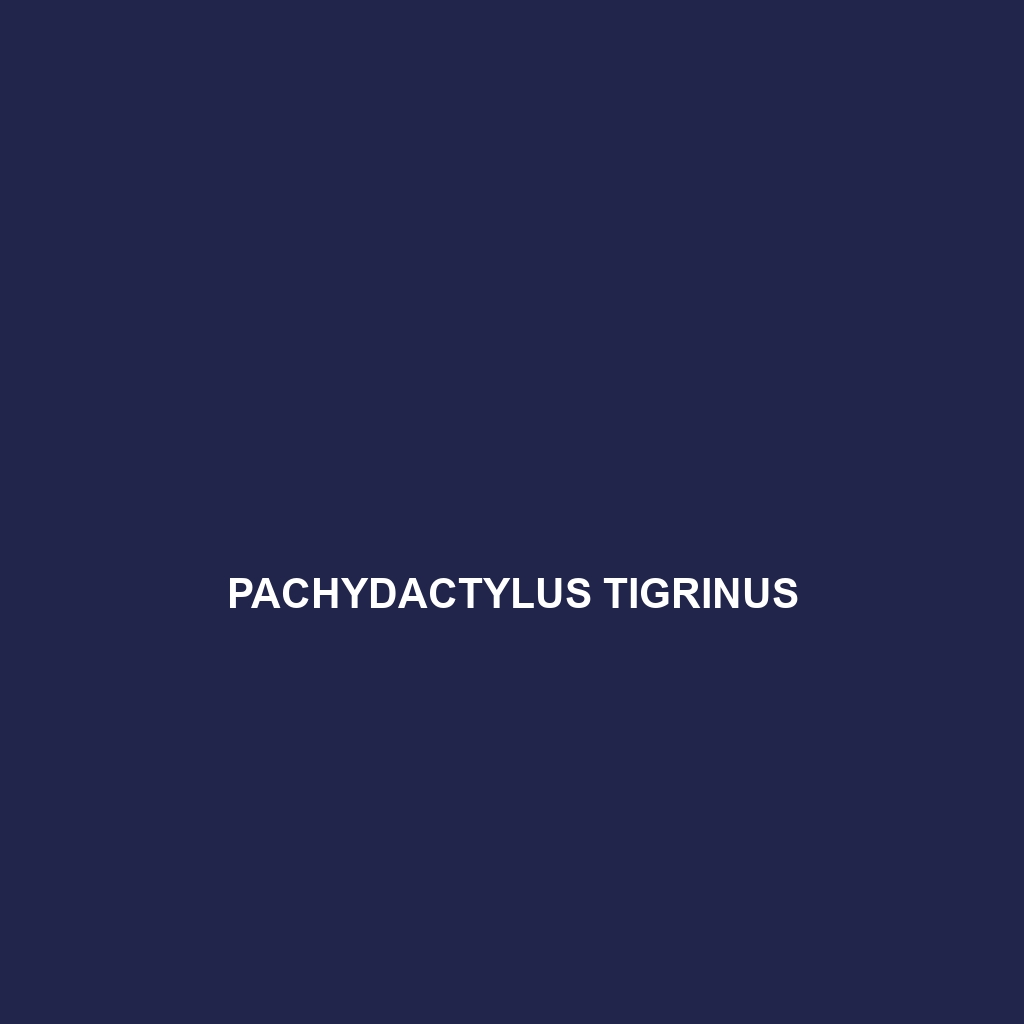<b>Ptyodactylus rivapadiali</b>, commonly found in the arid regions of North Africa, including the Saharan desert, is a nocturnal gecko adapted to harsh environments. This slender insectivore, reaching lengths of 10 to 15 cm, boasts excellent camouflage and specialized adhesive pads for climbing rocky terrains while playing a vital role in controlling insect populations.
Tag: insectivore gecko
Ptyodactylus homolepis
<b>Ptyodactylus homolepis</b>, also known as the homolepis gecko, is a slender insectivore found in arid regions of North Africa and the Middle East, characterized by its ability to camouflage with light brown to gray coloration and a unique ability to change color based on its environment. This nocturnal species plays a crucial ecological role by regulating insect populations and serves as prey for larger predators, showcasing remarkable adaptations that enable it to thrive in diverse habitats.
Pseudogekko isapa
<b>Pseudogekko isapa</b>, commonly found in tropical habitats like rainforests in Southeast Asia, is a slender, vibrant gecko known for its striking coloration, nocturnal behavior, and adhesive toe pads. This species plays a vital role in controlling insect populations and is classified as vulnerable due to habitat loss and other environmental threats.
Ptyodactylus rivapadiali
<b>Ptyodactylus rivapadiali</b>, commonly found in the arid regions of North Africa, including the Saharan desert, is a nocturnal gecko adapted to harsh environments. This slender insectivore, reaching lengths of 10 to 15 cm, boasts excellent camouflage and specialized adhesive pads for climbing rocky terrains while playing a vital role in controlling insect populations.
Ptyodactylus homolepis
<b>Ptyodactylus homolepis</b>, also known as the homolepis gecko, is a slender insectivore found in arid regions of North Africa and the Middle East, characterized by its ability to camouflage with light brown to gray coloration and a unique ability to change color based on its environment. This nocturnal species plays a crucial ecological role by regulating insect populations and serves as prey for larger predators, showcasing remarkable adaptations that enable it to thrive in diverse habitats.
Pseudogekko isapa
<b>Pseudogekko isapa</b>, commonly found in tropical habitats like rainforests in Southeast Asia, is a slender, vibrant gecko known for its striking coloration, nocturnal behavior, and adhesive toe pads. This species plays a vital role in controlling insect populations and is classified as vulnerable due to habitat loss and other environmental threats.
Phyllodactylus microphyllus
Discover the <b>Phyllodactylus microphyllus</b>, also known as the small leaf-toed gecko, a nocturnal insectivore thriving in tropical and subtropical Caribbean forests. This slender gecko, reaching 4 to 5 inches, features enlarged toe pads for climbing and plays a vital role in controlling insect populations while facing threats from habitat loss.
Phyllodactylus bugastrolepis
The Phyllodactylus bugastrolepis, or bugastrolepis gecko, is a vibrant, slender gecko native to Central and South America's tropical rainforests and savannas, known for its nocturnal behavior, large adhesive toe pads, and insectivorous diet. This resilient species plays a crucial role in regulating insect populations and serves as a vital food source within its ecosystem.
Pachydactylus serval
<p><b>Pachydactylus serval</b>, commonly known as the serval gecko, is a nocturnal insectivore native to the diverse ecosystems of southern Africa, thriving in savannas, scrub forests, and thorny woodlands. With robust bodies, unique tuberculate scales, and a remarkable ability to camouflage, this gecko plays a vital role in controlling insect populations and maintaining ecological balance.</p>
Pachydactylus capensis
Discover the Pachydactylus capensis, commonly known as the Cape thick-toed gecko, a nocturnal insectivore native to southern Africa's savannas and semi-arid deserts. With its distinctive granular skin, large adhesive toes, and remarkable climbing abilities, this gecko plays a vital role in its ecosystem by regulating insect populations and serving as prey for larger predators.









